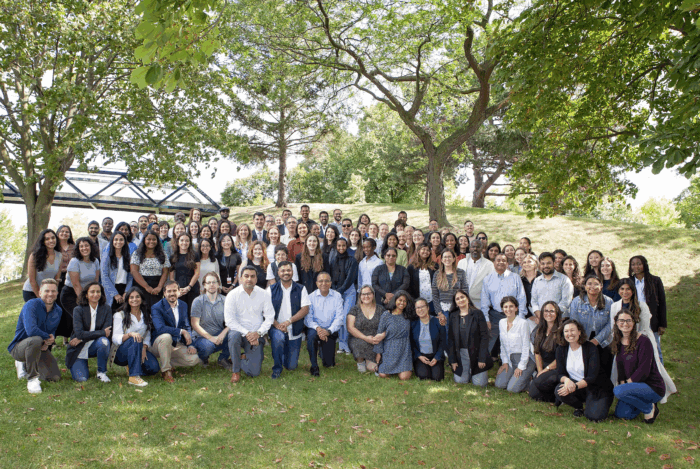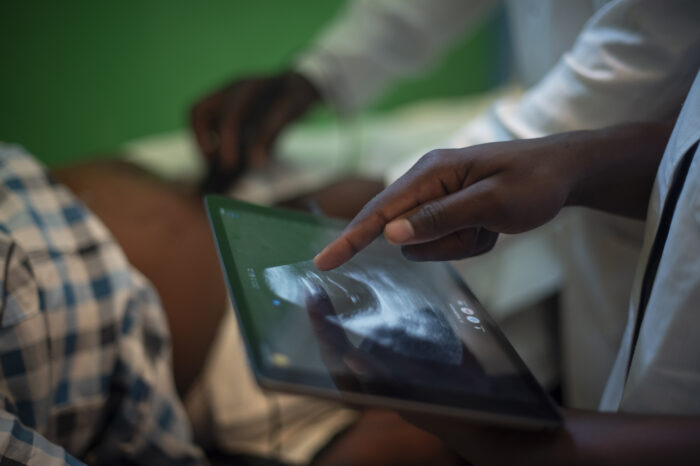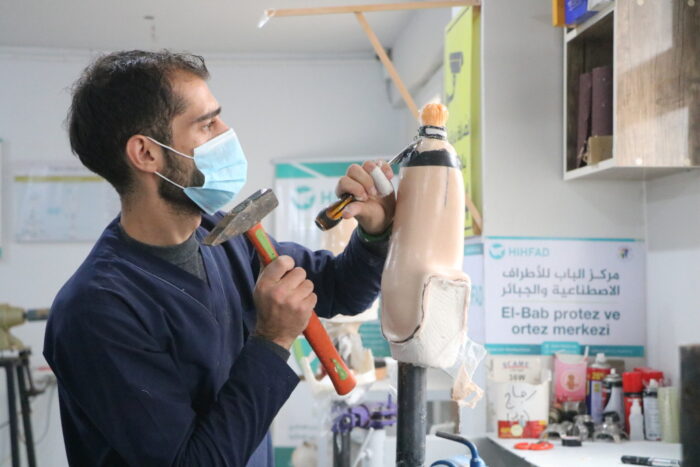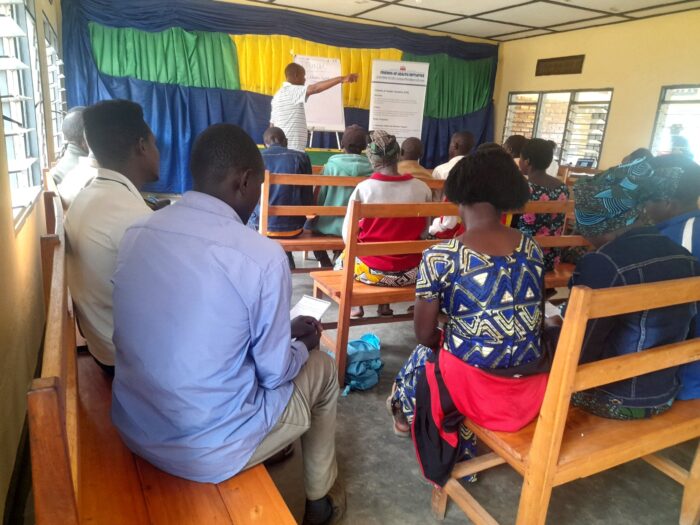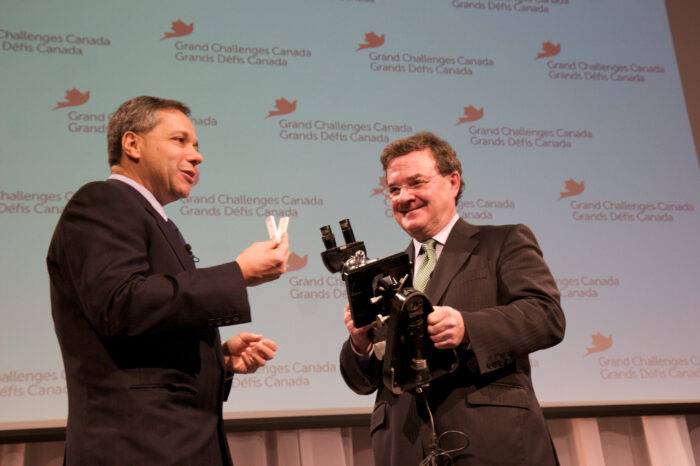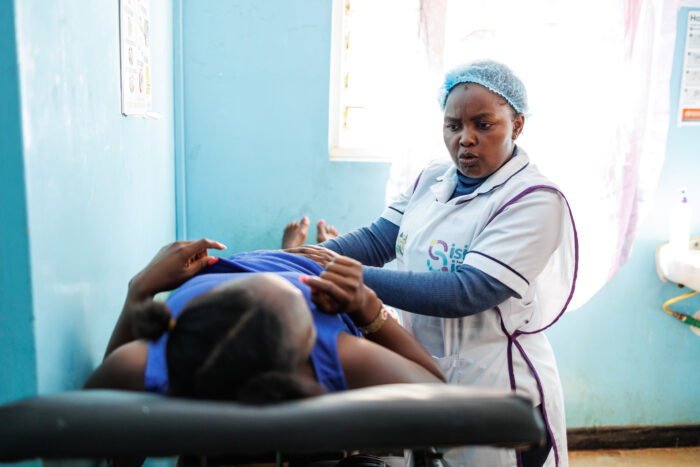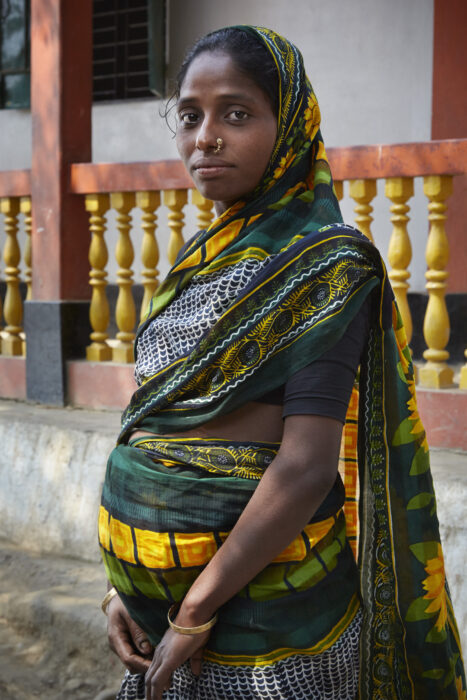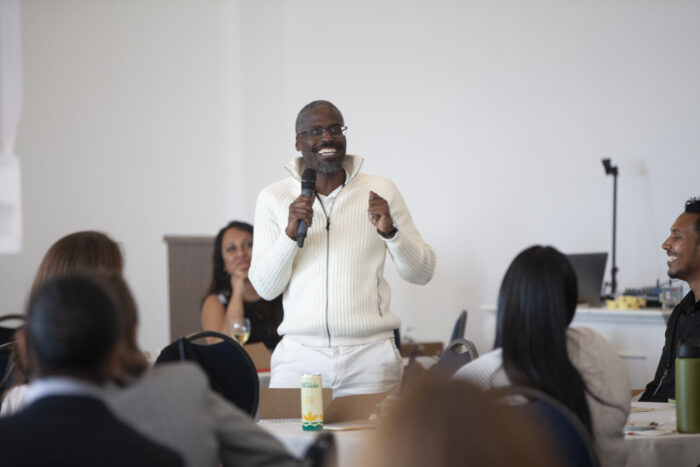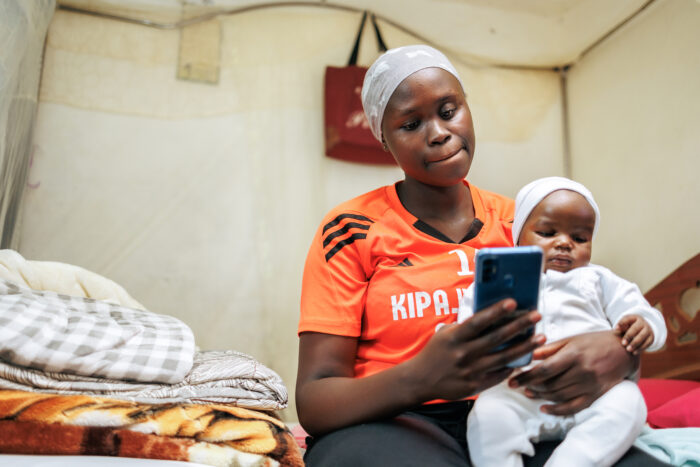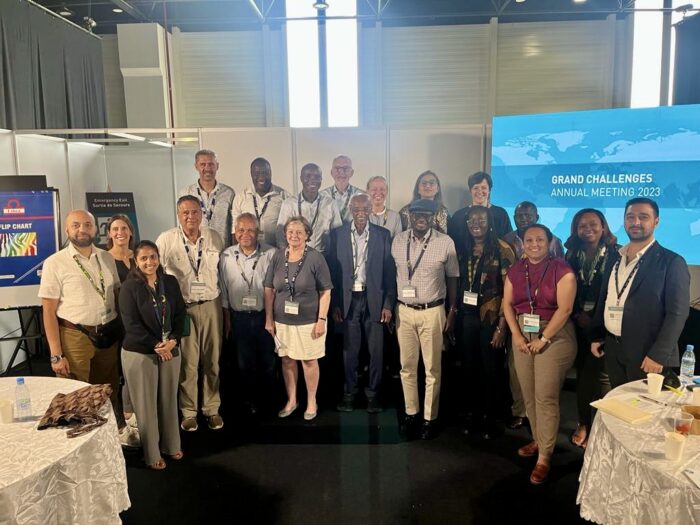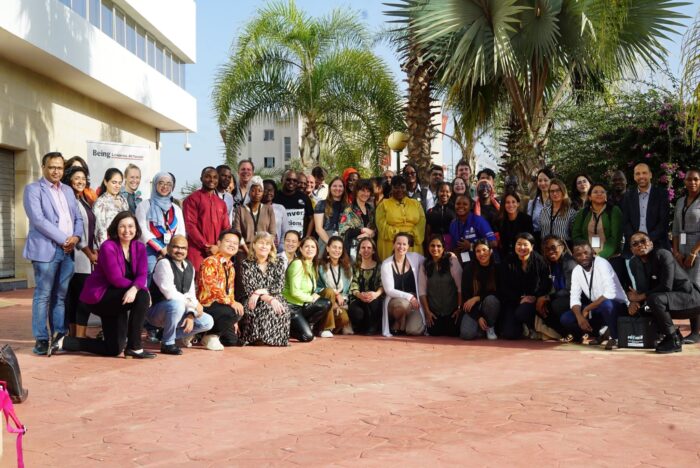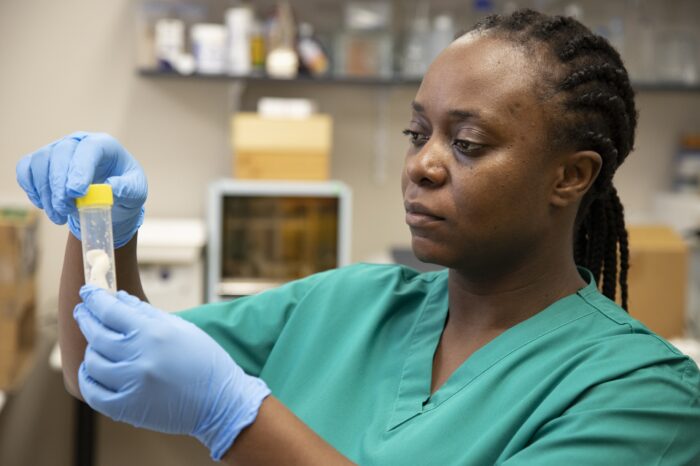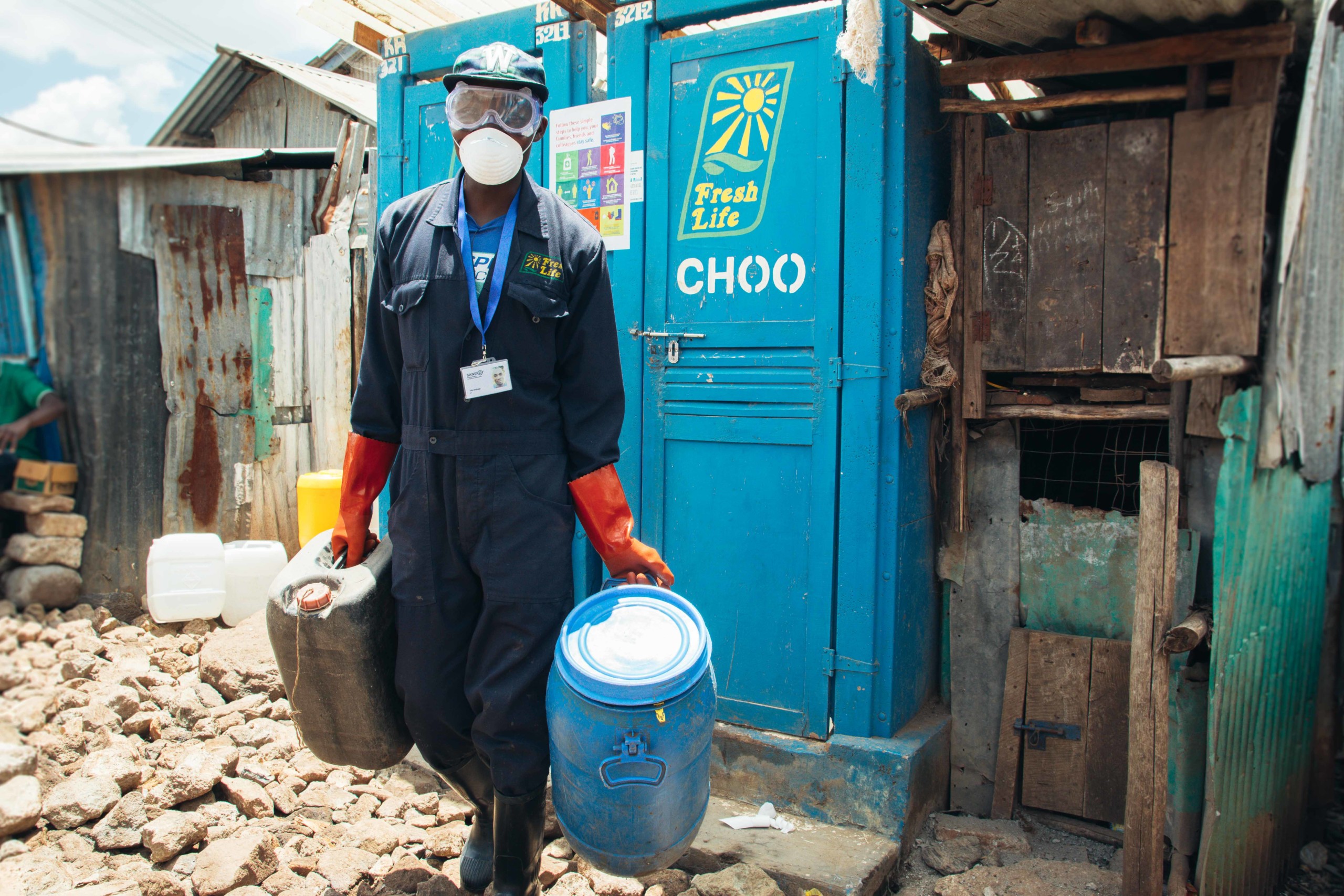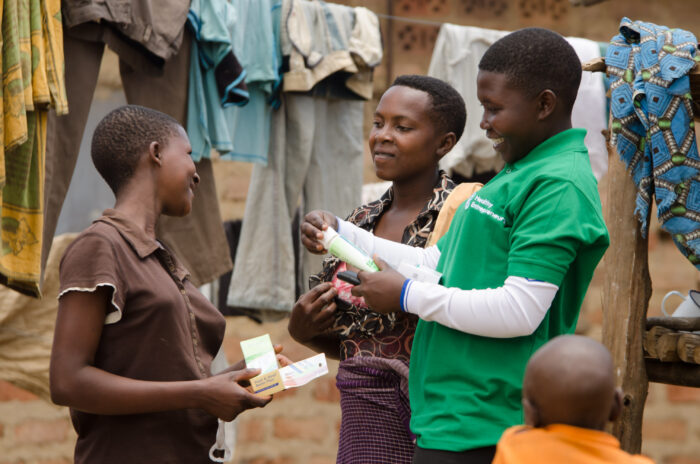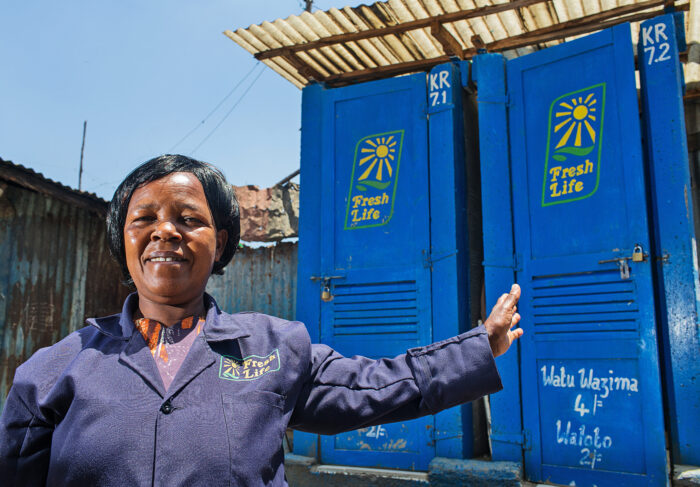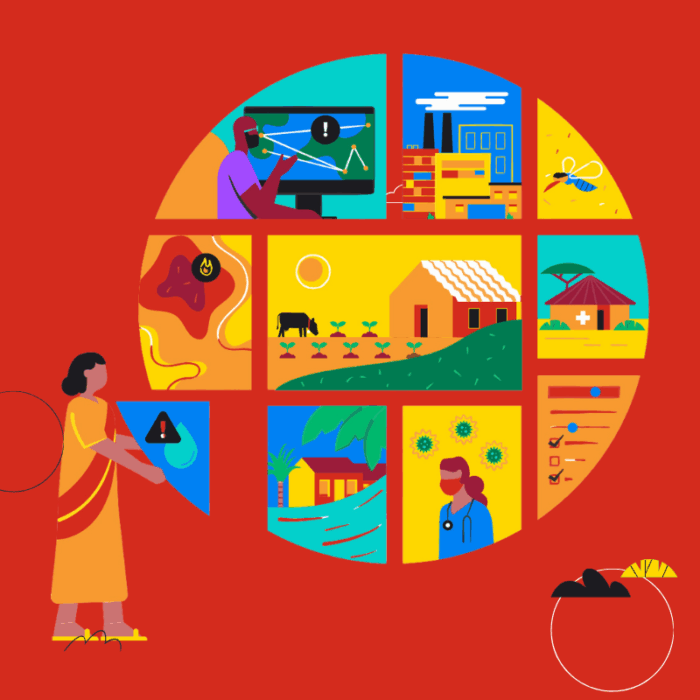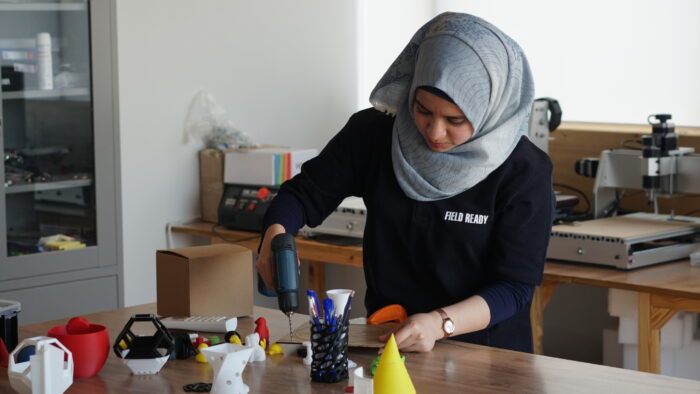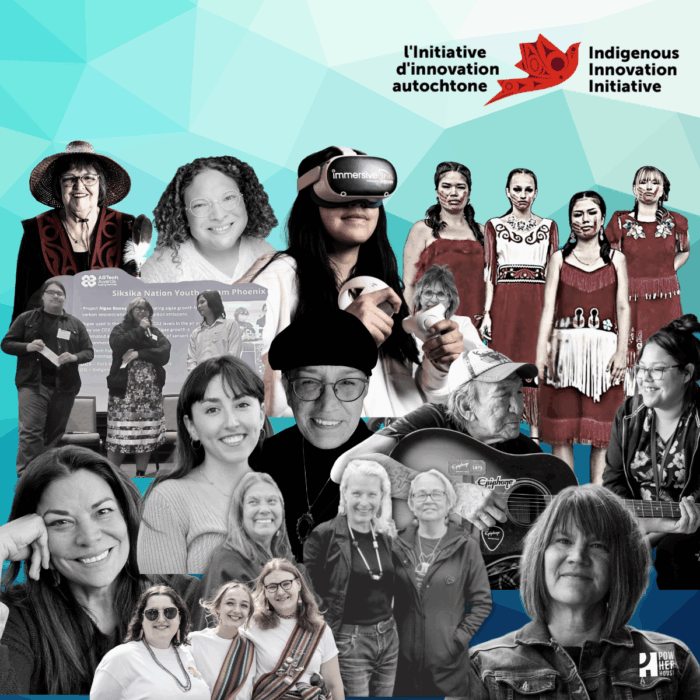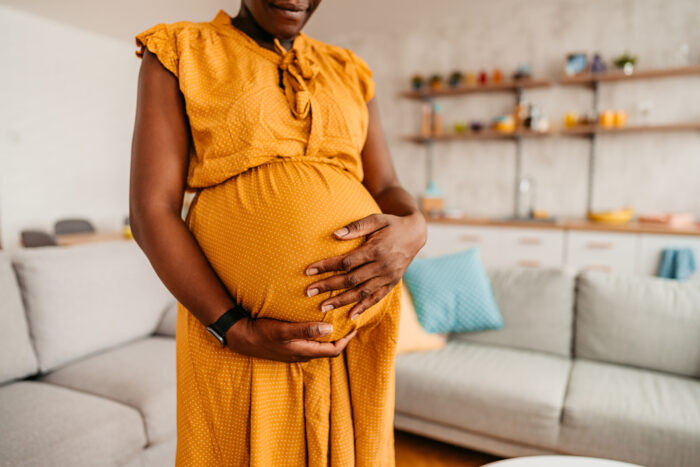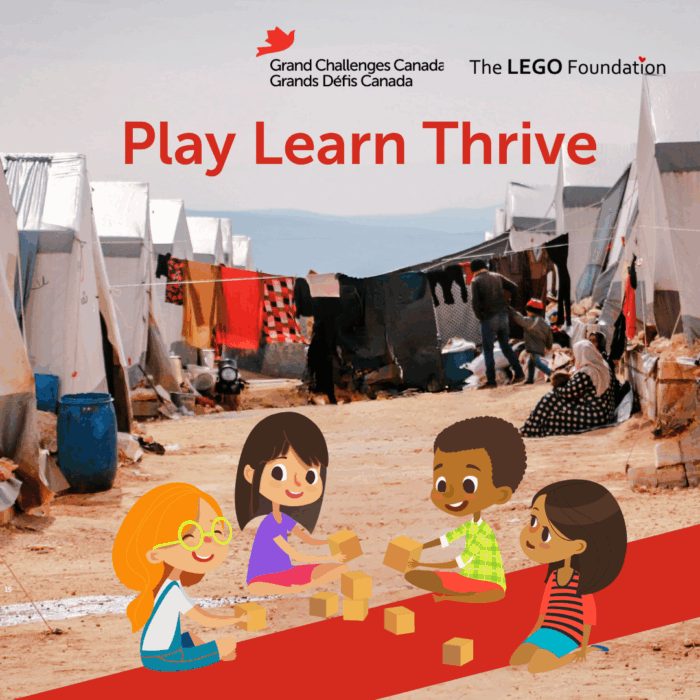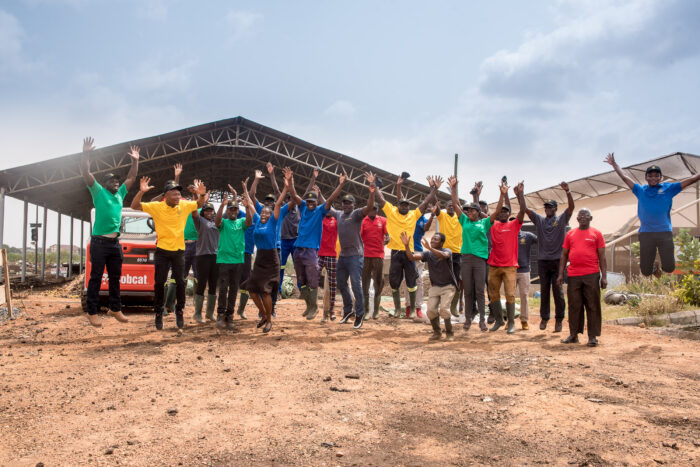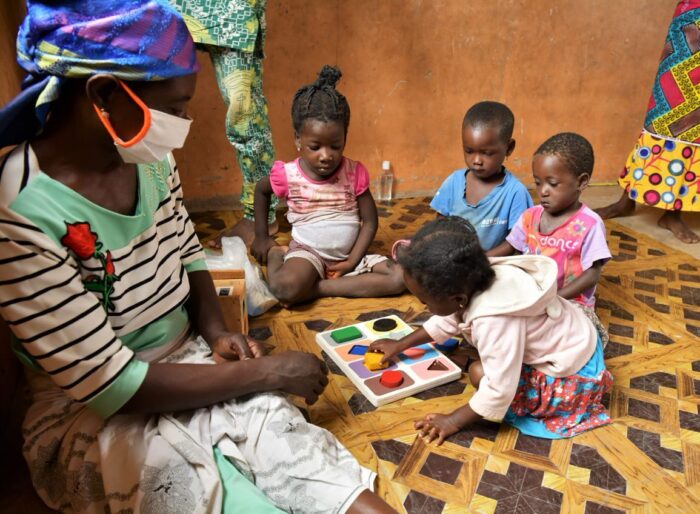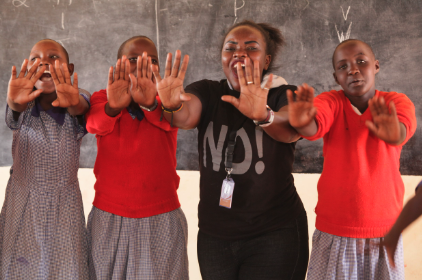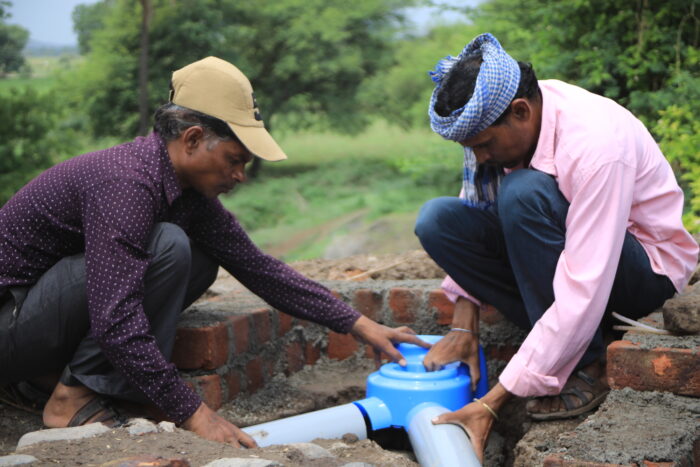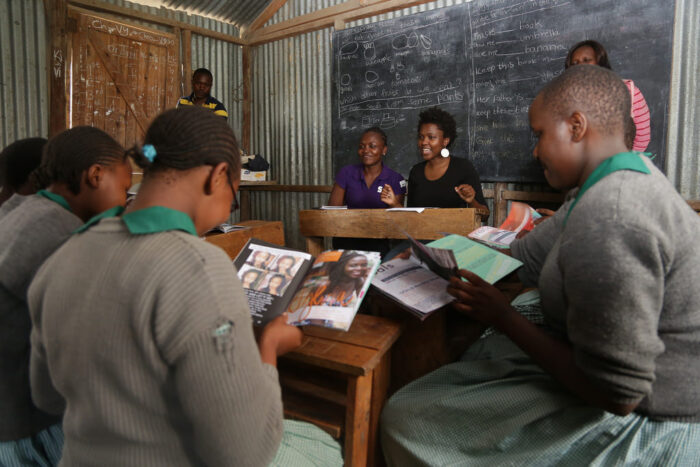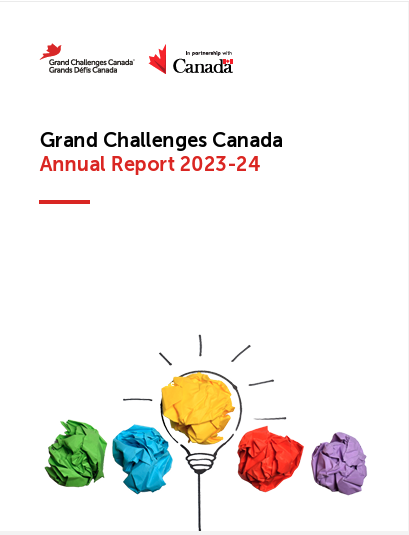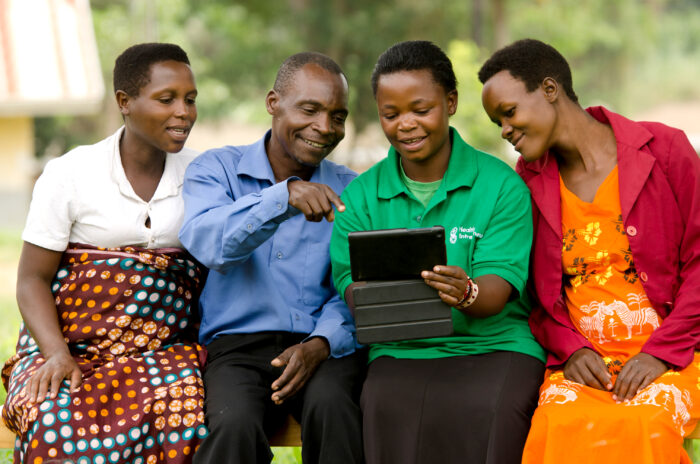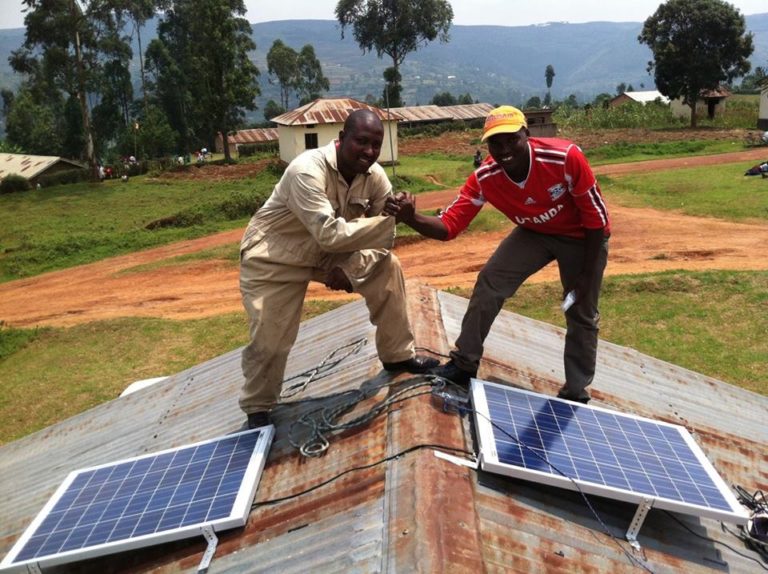Dr. Patrick T Kagurusi is the Reproductive, Maternal, Newborn, Child and Adolescent Health (RMNCAH) Program Technical Advisor for Amref Health Africa and is based in Kampala, Uganda. Follow Patrick on Twitter at @pkagurusi. Jennifer Foulds is the Communications and PR Director for Amref Health Africa in Canada, based in Toronto. Follow Amref Health Africa in Canada on Twitter at @AmrefCanada.
In a mountainous region in southwestern Uganda, the health of mothers and their newborn babies is improving thanks to an innovative tool that brings environmentally-sustainable solar power to health centres that used to go dark when the sun went down.
The tool? The We Care Solar Suitcase, a self-contained solar electric system designed to support maternal and child health care. It powers medical lights, a fetal heart rate monitor, cell phones, headlamps, and a laptop computer programmed with educational materials, as well as an electronic medical record information system – all essential for health workers to help mothers safely deliver babies.
But the Solar Suitcase generates more than electricity. As Amref Health Africa and its partners learned through a three-year project funded by the Saving Lives at Birth partnership, the availability of light at health care centres can have a cascading effect leading to important policy and behavioural changes that are vital to sustaining lasting improvements in maternal, newborn, and child health.
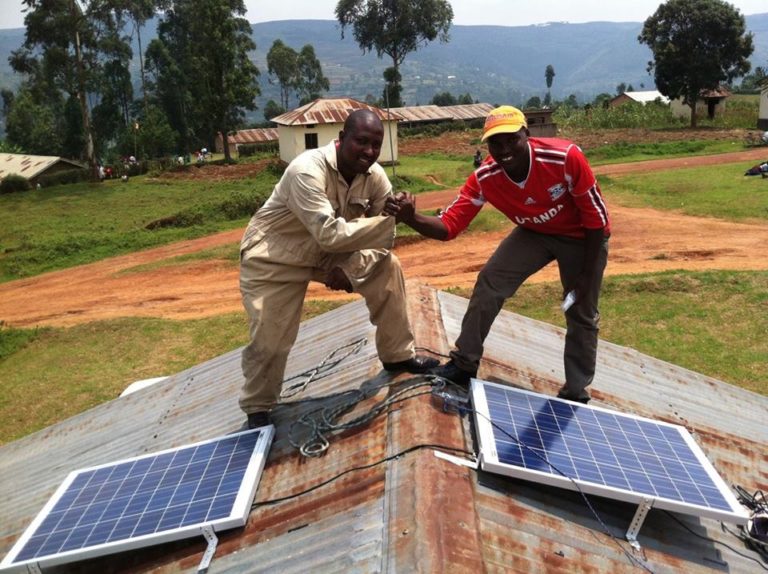
Installing solar panels on the roofs of health facilities in the mountainous southwestern region of Uganda. Photo courtesy of We Care Solar®
The Power of Light
Lack of electricity is a significant challenge for health care workers in Uganda, with 55% of facilities having no access to light in the evening.
This missing light has direct implications for the health of women and children in the surrounding communities:
- Health workers often choose to go home when it gets dark because it’s so difficult to work without light; pregnant women who go to health centres at night only to find them empty choose not to return and instead give birth at home where minor complications can be deadly.
- When health workers do stay to provide services in the dark, they are unable to carry out basic, sometimes life-saving interventions, such as diagnosing and treating complications, suturing lacerations, or resuscitating newborns who have difficulty breathing.
Electricity, then, has the power to drive lasting health change. But, as the Saving Mothers and Babies with Reliable Solar Power project knows well, not on its own.
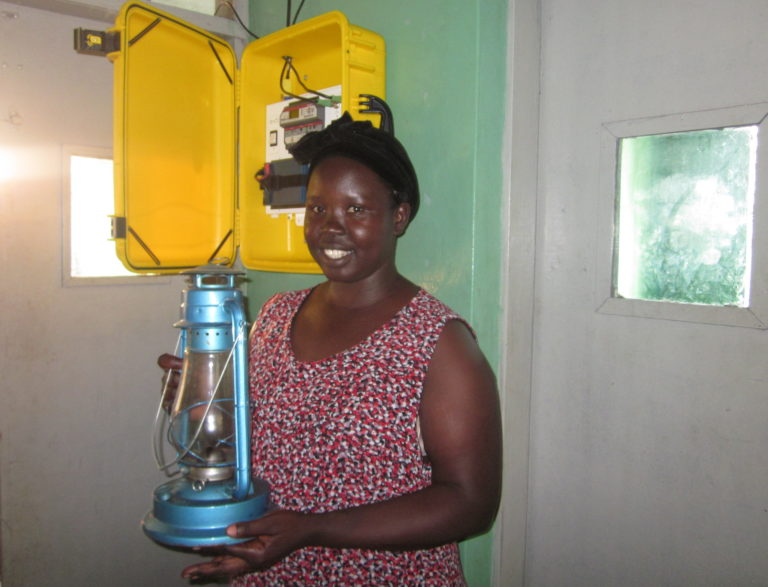
Before the Solar Suitcase, Claire, a midwife, had to rely on a kerosene lamp to provide light in the health facility where she works. Photo courtesy of We Care Solar®
Energizing Integration for Sustainability
The Saving Mothers and Babies with Reliable Solar Power project involved outfitting 147 Solar Suitcases in 100 remote health care facilities in four districts of Uganda – Kabale, Kanungu, Kisoro, and Rukungiri.
Along with the suitcases, We Care Solar provided training to local health providers and technicians on how to install, maintain, and operate these devices. Program leads worked with the health facilities to ensure they budgeted for future needs, such as batteries or repairs, and found local suppliers who could provide key replacement parts when needed.
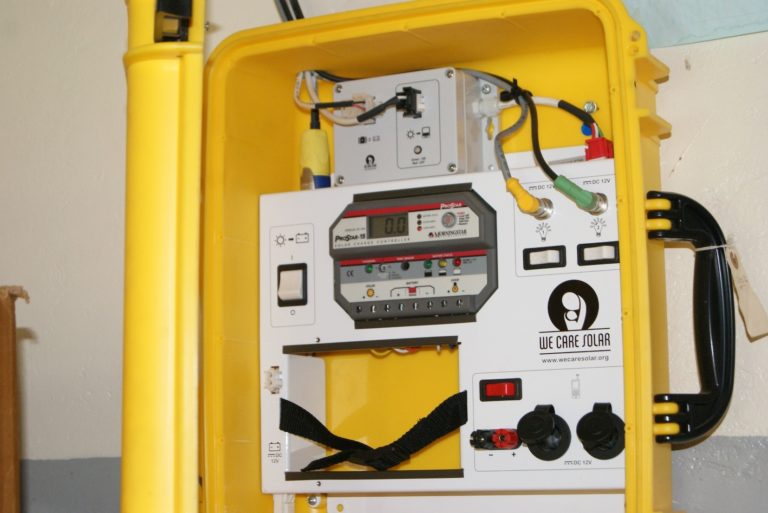
A We Care Solar Suitcase® at one of the health facilities. Photo courtesy of Amref Health Africa in Uganda
Beyond the Delivery Room: Powering Policy Change
The health system itself required strengthening in key areas so the benefit of electricity could be translated into saved lives. Here’s where Amref Health Africa in Uganda came in.
With its expertise in health care service delivery, Amref Health Africa provided specialized training in basic emergency obstetric and newborn care to 471 health care workers. After training, the health workers were able to monitor labour, conduct clean and safe deliveries, manage complications such as bleeding after birth, prevent infections among mothers and newborns, conduct newborn resuscitation, and provide essential postnatal care. Amref Health Africa also trained 400 Community Health Workers to help get pregnant women and their babies to seek care at facilities when appropriate. Community Health Workers were trained on community mobilization, maternal and newborn danger sign identification, case referral and data collection to provide vital information for the local and the national Ministry of Health.
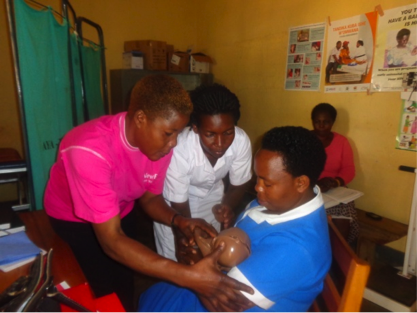
Health care workers receive specialized training on maternal and newborn care. Photo courtesy of Amref Health Africa in Uganda
So far so good; but the project also needed to work directly with the communities to support advocacy to ensure their rights to health are continuously met by local government, such as ensuring an adequate number of health workers to staff facilities, hired by local governments.
This was the expertise that the White Ribbon Alliance of Uganda brought to the project. It convened community dialogues in each of the four districts so people could score their local government on the services being provided. Services for maternal, newborn and child health scored very low, leading to community-led advocacy efforts to demonstrate to local governments the value and importance of investing in trained health workers to support the health of moms and babies. After all, what good is electricity if there aren’t enough trained health workers to serve the needs of the communities?
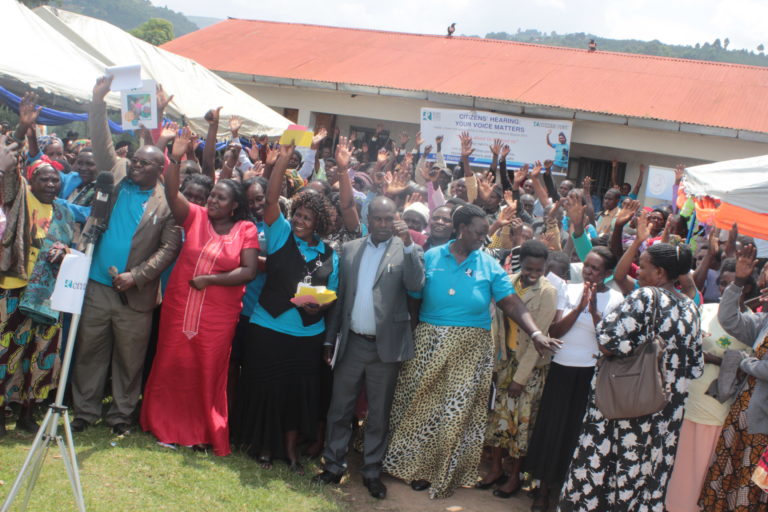
Residents of the Kabale District take part in a community dialogue. Photo courtesy of White Ribbon Alliance of Uganda
Perhaps most importantly, integration included working directly with the Ministry of Health of the Republic of Uganda at the national and district levels – a model that Amref Health Africa uses to help ensure that whatever health changes are made in communities can be sustained long after the project has ended. In March 2016, the Government of Uganda released its “Investment Case for Reproductive, Maternal, Newborn, Child and Adolescent Health” as part of the government’s Global Financing Facility process, which cited lack of electricity, along with water and staff quarters, as a ‘very major obstacle’ to providing quality health care services for mothers and babies, particularly in rural and remote areas. As the results of this project show, the availability of light at health care centres attracts more women to attend for skilled care during pregnancy and delivery, and enables health care workers to provide higher quality service. The results also suggest that continuing to provide electricity at these and additional health care facilities will contribute to a reduction in maternal and newborn mortality.
Successes and Lessons Learned: Shedding some Light on Integration and Partnership
- Success: 18 new doctors and 42 new midwives were recruited and hired. This happened through the community-led advocacy facilitated by the project. The demand for change coming from the communities themselves significantly accelerated the time it took for local governments to staff the health facilities with the skilled health workers necessary to deliver quality services. Until community members spoke up, local governments were not committing the budget necessary to fully staff health facilities as required by policy. The Kabale District Government committed $200,000 USD over five years to sustain its new level of health worker staffing and service delivery. The five-year district operational plans include funding to cover health worker salaries and accommodation, as well as medical supplies for six newly functionalized operating theatres.
Lesson Learned: Through the project, the partners learned that community-led advocacy to hold local government officials to account is a vital piece of the puzzle when it comes to creating change that lasts. In the case of this project, more could have been accomplished if the advocacy work started sooner.
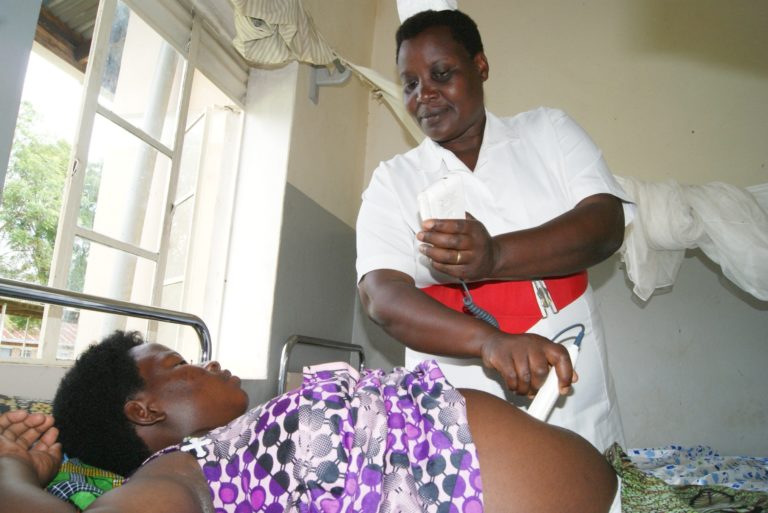
One of the health workers recruited to work at Kihihi Health Centre IV
- Success: 30% increase in women choosing to deliver their babies at a health facility in 2015 compared to 2013. The availability of light and electricity, as well as the presence of skilled health workers gave the community confidence in the local health care system. Pregnant women knew that if a health facility had electricity, it was worth their effort to make the journey to the facility, as health care workers would be there and would be able to provide quality service. There was also an increase of 27% in women completing the recommended number of antenatal visits (2015 vs. 2013), leading to healthier moms and newborns.
Lesson Learned: The project highlighted the importance of light in quality health care, especially as part of a fully integrated approach that involves strengthening the health system and advocating that local governments increase investments for quality health care.
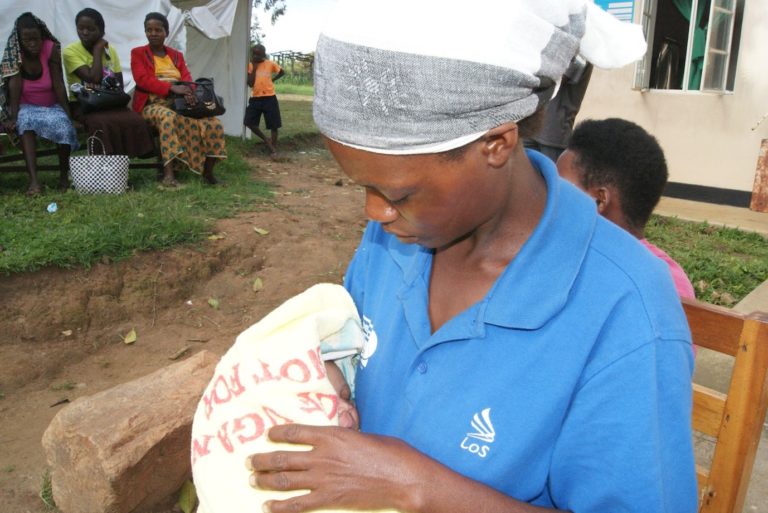
A mother with her baby at the Kihihi Health Centre IV where she had just given birth. Photo courtesy of Amref Health Africa in Uganda
- Success: Male involvement in maternal and newborn health increased. Men showed a keen interest in hearing the fetus’ heartbeat through the fetal monitor powered by the We Care Solar Suitcase. This was an unexpected outcome of the project. When the health workers began to notice men’s interest in the fetal monitor, they encouraged more men to come to antenatal appointments to hear the heartbeat. Health workers then used the opportunity to talk to men about birth plans and antenatal care.
Lesson Learned: While evidence shows that incentives are important for getting men involved in maternal and newborn care, project managers didn’t expect that the fetal monitors would capture so much interest from men. It’s important to be open to unexpected outcomes and seize them when they show up.
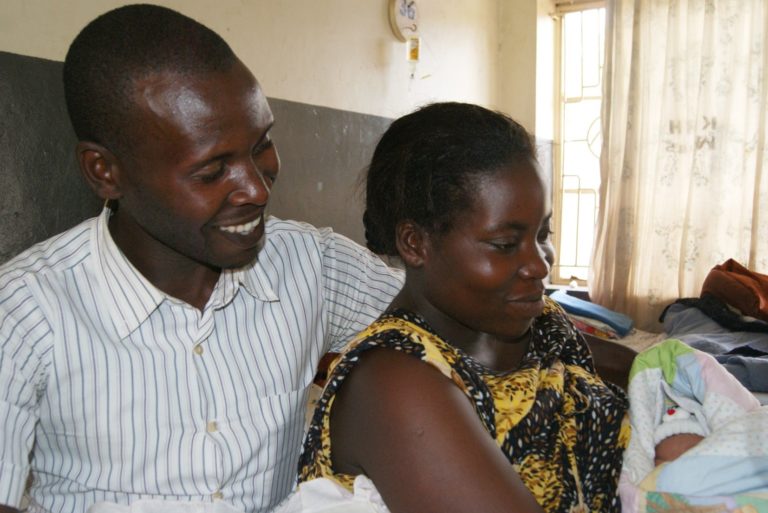
Parents with their newborn at Kabale Regional Referral Hospital. Photo courtesy of Amref Health Africa in Uganda
This project was made possible through the generous support of the Saving Lives at Birth partners: the United States Agency for International Development (USAID), the Government of Norway, the Bill & Melinda Gates Foundation, Grand Challenges Canada (funded by the Government of Canada), the U.K. Department for International Development (DFID), and the Korea International Cooperation Agency (KOICA). This blog was prepared by Amref Health Africa and does not necessarily reflect the views of the Saving Lives at Birth partners.
We encourage you to post your questions and comments about this blog post on our Facebook page Grand Challenges Canada and on Twitter @gchallenges.
